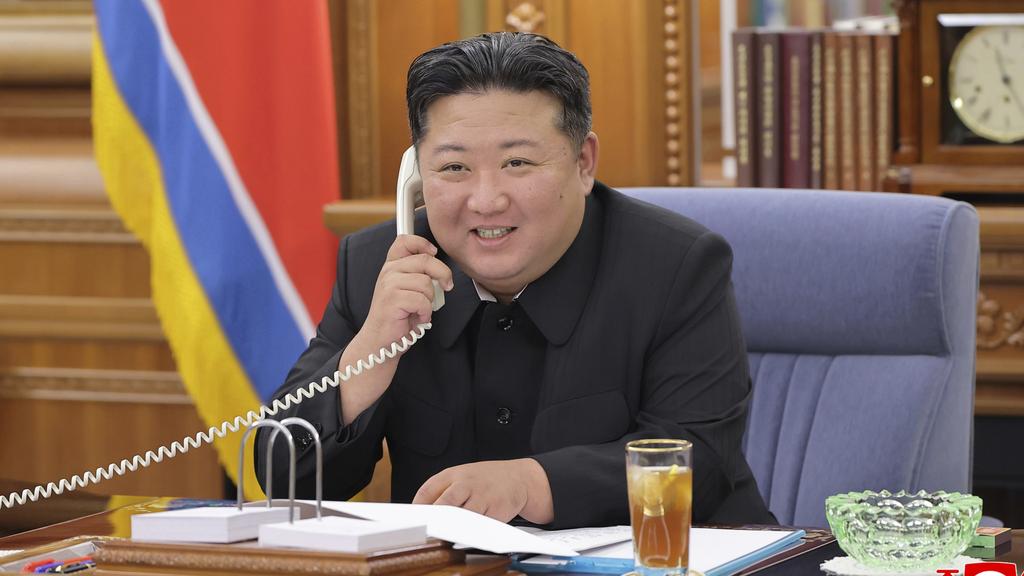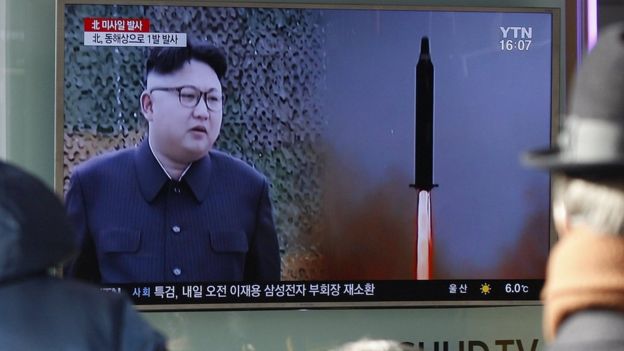
This article is more than
9 year oldSouth Korea and US officials said the missile, launched on Saturday night, flew east towards the Sea of Japan for about 500km (300 miles).
South Korea's defence ministry called it an armed provocation to test the response of US President Donald Trump.
Japan's Prime Minister Shinzo Abe, standing next to Mr Trump on a visit to the United States, said the test was "absolutely intolerable".
United Nations resolutions forbid North Korea from carrying out ballistic missile tests - part of wider efforts to prevent it becoming a fully nuclear-armed power.
South Korea's foreign ministry said that "North Korea's repeated provocations show the Kim Jong-un regime's nature of irrationality, maniacally obsessed in its nuclear and missile development".

Nato also condemned the missile test, with Secretary General Jens Stoltenberg urging North Korea "not to raise tensions further and to re-engage in a credible and meaningful dialogue with the international community".
The European Union joined the criticism, declaring in a statement that North Korea's "repeated disregard of its international obligations is provocative and unacceptable".
As for the US, Mr Trump said on Saturday: "America stands behind Japan, its great ally, 100%."
Top Trump adviser Stephen Miller told Fox News Sunday: "The message is that we are going to reinforce and strengthen our vital alliances in the Pacific region as part of our strategy to deter and prevent the increasing hostility that we've seen in recent years from the North Korean regime."

China, North Korea's closest ally, has yet to comment. Beijing has joined in international efforts to press Kim Jong-un to reign in his nuclear ambitions.
North Korea itself has yet to confirm the test.
Sunday's launch took place at 07:55 local time (22:55 GMT Saturday) from the Banghyon air base in North Pyongan province on the west side of the Korean peninsula.
Much of the detail has come from South Korea officials.
The Musudan intermediate-range missile reached an altitude of about 550km (350 miles), the South Korean military said. This type is thought capable of flying a distance of 4,000km and reaching the US territory of Guam in the Pacific Ocean.
However, experts suggest the tests are programmed for shorter distances to avoid a missile landing on Japan. This was the latest in a series of tests in the past year, including North Korea's fifth of a nuclear device.

In January, Kim Jong-un warned that his military was close to testing long-range missiles capable of delivering nuclear warheads to the United States mainland, but experts doubt the technology has progressed that far.
At the time, Mr Trump derided the claim in a tweet, saying: "It won't happen."
On a visit to South Korea last week, US Defence Secretary James Mattis said that any use of nuclear weapons by North Korea would be met with an "effective and overwhelming" response.
He also reconfirmed plans to deploy a US missile defence system in South Korea later this year.